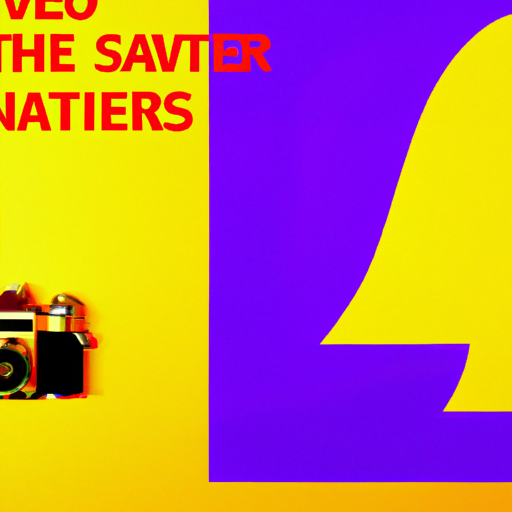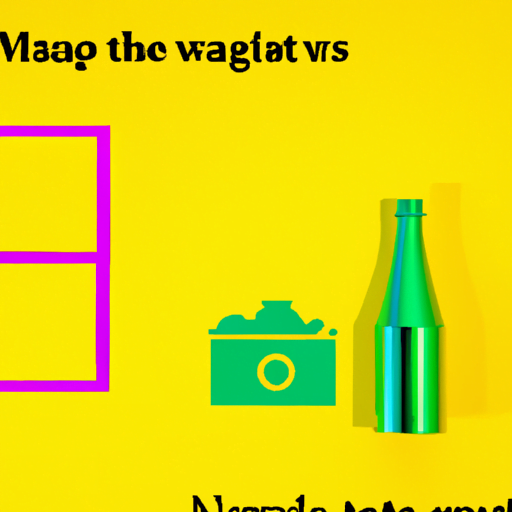
-
Table of Contents
The Use of Negative Space: Hidden Messages in Design

When it comes to design, what you don’t see can be just as important as what you do see. Negative space, also known as white space, is the area around and between the main elements of a design. While it may seem empty or unused, negative space plays a crucial role in creating balance, harmony, and conveying hidden messages in design. In this article, we will explore the power of negative space and how it can be effectively utilized to communicate messages and evoke emotions.
The Power of Negative Space
Negative space is not just an absence of content; it is an active element that shapes the overall design. By strategically using negative space, designers can guide the viewer’s attention, create visual hierarchy, and enhance the overall user experience. It allows the eye to rest and helps to prevent visual clutter, making the design more visually appealing and easier to understand.
One of the key advantages of negative space is its ability to convey hidden messages and evoke emotions. By manipulating the empty spaces, designers can create subtle visual cues that communicate ideas, values, and even brand identities. Let’s explore some examples of how negative space has been used to convey hidden messages in design.
Examples of Hidden Messages in Design
1. FedEx Logo
The FedEx logo is a classic example of how negative space can be used to convey a hidden message. At first glance, the logo appears simple, with the company name written in bold purple and orange letters. However, if you look closely, you will notice an arrow formed between the letters ‘E’ and ‘x’. This arrow symbolizes speed, precision, and forward movement, aligning perfectly with FedEx’s brand values as a reliable and efficient courier service.
2. Amazon Logo
The Amazon logo is another well-known example of hidden messages in design. The logo features a simple, recognizable arrow that starts from the letter ‘A’ and ends at the letter ‘Z’. This arrow not only represents a smile, indicating customer satisfaction, but also signifies that Amazon offers everything from ‘A’ to ‘Z’, emphasizing their vast product range and commitment to customer convenience.
3. Tour de France Logo
The Tour de France logo cleverly incorporates negative space to convey multiple hidden messages. The logo depicts a cyclist, but if you look closely, you will notice that the cyclist’s body also forms the shape of a bird. This bird symbolizes freedom, agility, and the spirit of competition, all of which are closely associated with the Tour de France event.
Case Studies: The Impact of Negative Space
Several case studies have demonstrated the effectiveness of negative space in design. Let’s explore a few examples:
1. Apple
Apple is renowned for its minimalist design approach, which often utilizes negative space to create a clean and elegant look. The use of negative space in Apple’s product packaging, advertisements, and user interfaces helps to convey a sense of simplicity, sophistication, and premium quality. This design strategy has played a significant role in establishing Apple as a leading brand in the tech industry.
2. Nike
Nike’s iconic “Just Do It” campaign is a prime example of how negative space can evoke emotions and inspire action. The campaign features simple, bold typography against a white background, with ample negative space surrounding the text. This design choice allows the message to stand out and encourages viewers to focus on the call to action, empowering them to take charge and pursue their goals.
Statistics on the Impact of Negative Space
Research and studies have shown the positive impact of negative space on design and user experience:
- A study by the Nielsen Norman Group found that users prefer websites with ample white space, as it improves readability and comprehension.
- In a survey conducted by Adobe, 66% of graphic designers agreed that negative space is crucial for creating effective designs.
- According to a study published in the Journal of Marketing Research, advertisements with more white space are perceived as more aesthetically pleasing and memorable.
Conclusion
Negative space is a powerful tool in design that goes beyond mere emptiness. It has the ability to convey hidden messages, evoke emotions, and enhance the overall user experience. By strategically utilizing negative space, designers can create visually appealing and impactful designs that effectively communicate ideas, values, and brand identities. Whether it’s through cleverly hidden symbols or creating a sense of simplicity and elegance, negative space plays a crucial role in shaping the perception and success of a design. So, next time you embark on a design project, remember the power of negative space and the hidden messages it can convey.
